
Journal of Tropical Entomology
Journal of Tropical Entomology (formerly Journal of Tropical Asian Entomology) is a peer reviewed, open access journal published on a continuous publication model (papers are published as soon as they are accepted and ready).
This journal has no article processing charges (APC) and free for both readers and authors. Aim of JTE is to accumulate the knowledge on tropical and sub-tropical insects, which is made available for free.
Articles are invited on topics in all areas of insect science, including but not limited to:
- Arthropod ecology, biogeography, population dynamics, behaviour, biodiversity and conservation
- Arthropod–host and vector–parasite relationships and other microbial-insect interactions
- Agricultural pests, stored product pests, forest entomology, wood product pests, biological control, integrated pest and vector management
- Social insects, beneficial insects, commercial insects and socio-economics
- Medical entomology
- Arthropod taxonomy, phylogeny & systematics, descriptions and morphology
- Genetics, genomics and biochemistry of insects
- Methods and data in insect and arthropod research
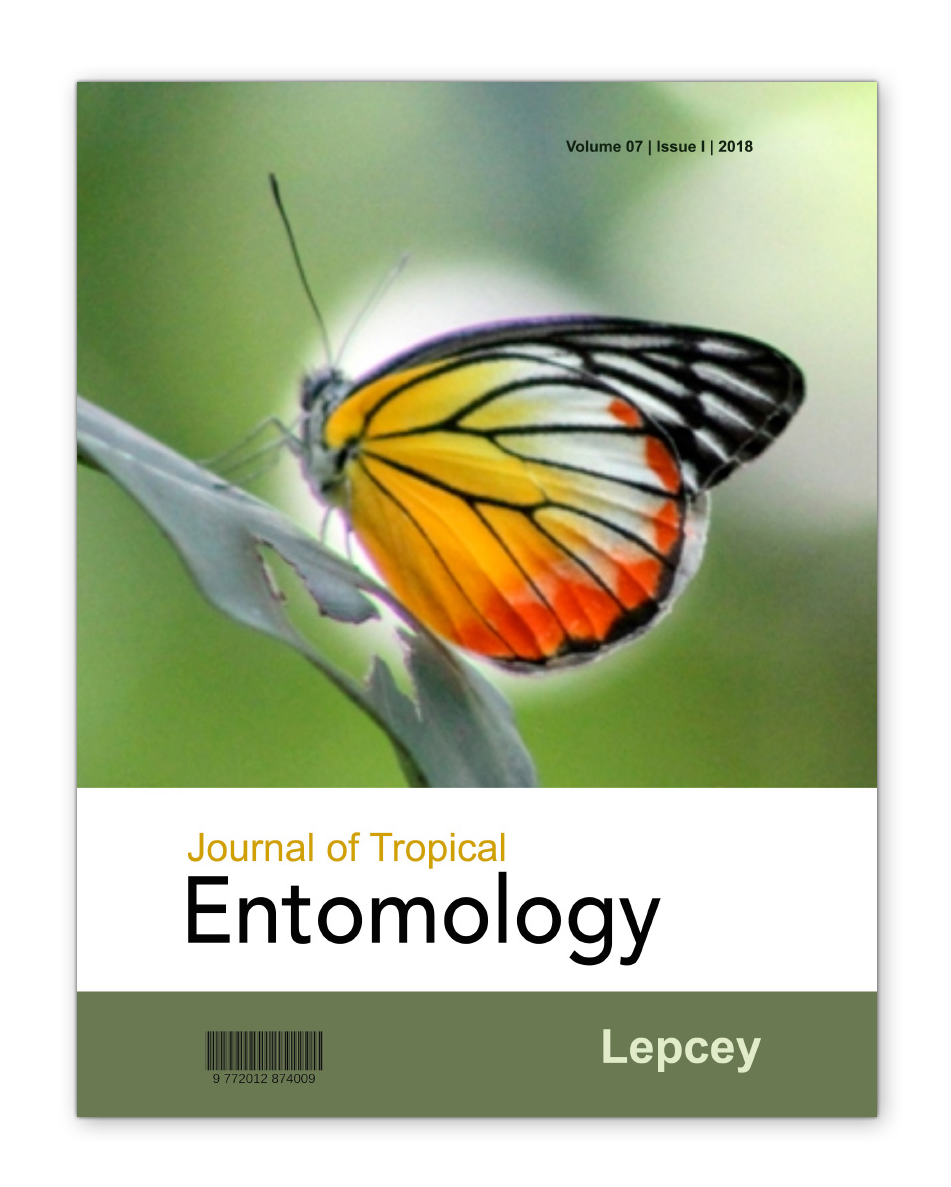
Selected articles
| | Genomics |
Research article
Complete mitochondrial genome of Bactrocera limbifera (Insecta: Tephritidae) ...
I. Wayan Suana | Sze-Looi Song |...
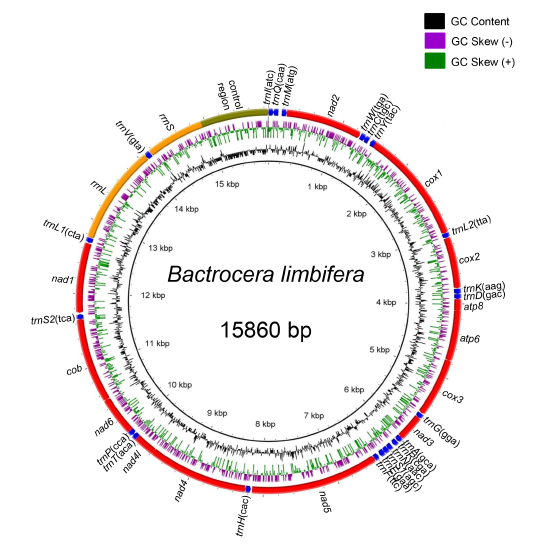
Bactrocera limbifera is a dacine fruit fly found across Southeast Asia. The complete mitochondrial genome and phylogenetic relationships of other Bactrocera species have been extensively studied except for B. limbifera. We report here its complete mitochondrial genome determined by next-generation sequencing and phylogenetic relationship with other congeners. The whole mitogenome possessed 37 genes (13 protein-coding genes – PCGs, 2 rRNA and 22 tRNA genes) and a control region.
| | Ecology |
Research article
Ambush and oviposition site selection by Giant Asian Mantis (Mantodea: Mantidae) ...
Peroth Balakrishnan
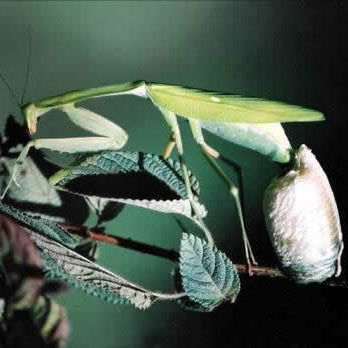
The ambush and oviposition site characteristics of Giant Asian Mantis Hierodula membranacea were studied in a tropical wet evergreen forest in Silent Valley National Park, in the Western Ghats during January 2002 to May 2005. Ambushing mantids were located on 12 plant species, at a mean height of 1.63±0.12 m (0.7–4.2 m) above ground. Ambush sites were characterized by high shrub density that provides camouflaging backgrounds to lie in wait to ambush prey. Lantana camara was the most commonly used plant species ...
| | Phylogenetics |
Research article
Genetic diversity and molecular phylogenetic of subterranean termites Coptotermes sp. ...
Abdul Hafiz Ab Majid | N Hanis Zulkifli | ...
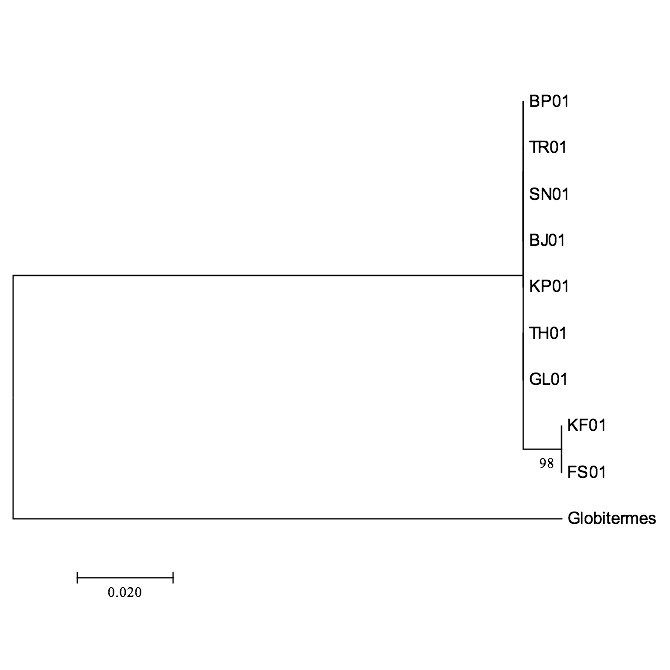
Coptotermes sp. is the most aggressive species of subterranean termites and Coptotermes gestroi is the most economically important species in the South-East Asia. Studies examining the phylogenetic and genetic diversity of subterranean termites have been conducted worldwide; however, there are no documented reports on the phylogenetic and genetic diversity of subterranean termites in Malaysia, particularly from heavily infested urban structure in Penang. We examined the phylogenetic and genetic diversity ...
| | Morphology |
Research article
Ultramorphology of antennal sensilla in open nest honeybees ...
G. Suwannapong | J. Noiphrom | ...
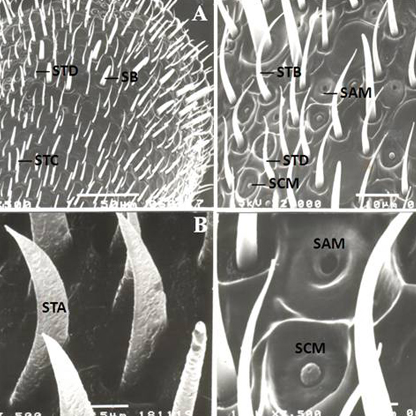
Relatively little known about the sensory morphology of olfactory sensilla in three species of native honeybees that play an important role as pollinators in Thailand. Here we provide a detailed description and analysis of the antennal sensilla ultramorphology of Apis andreniformis, A. dorsata and A. florea workers using scanning electron microscopy. Each antenna had one segmented scape, a pivoted pedicel and ten-segmented flagellum. There were substantial differences in the density of sensilla ...
| | Medical entomology |
Research article
Breeding habitat diversity and species composition of Anopheles ...
Gunathilaka P.A.D.H.N.R. | ...
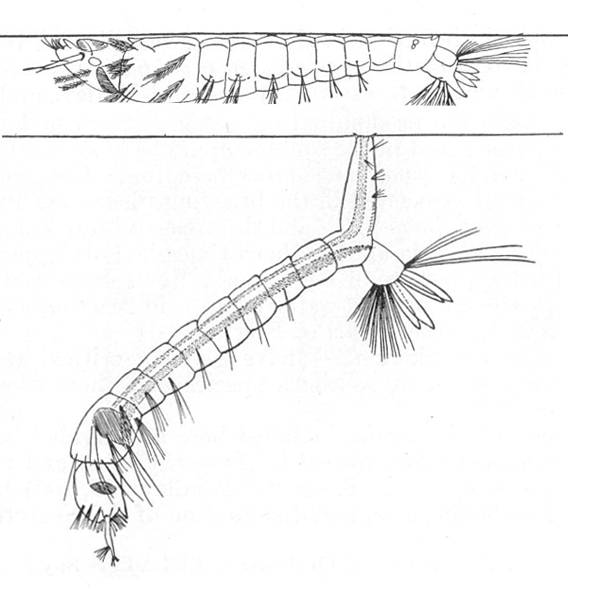
Entomological studies on the abundance of malaria vector Anopheles mosquitoes have not been studied in some malaria endemic areas of Sri Lanka over past 30 years in view of the security situation. The aim of this study was to explore the habitat diversity and distribution of anopheline species in Trincomalee District in order to prioritize vector breeding habitats for developing timely and cost effective larval controlling measures. Potential larval habitats for Anopheles mosquitoes were surveyed ...
| | Pests |
Scientific note
Spotted wing Drosophila (Drosophila suzukii) infestation in Cherry ...
Divender Gupta | Ranjeet Singh Bhatia | ...
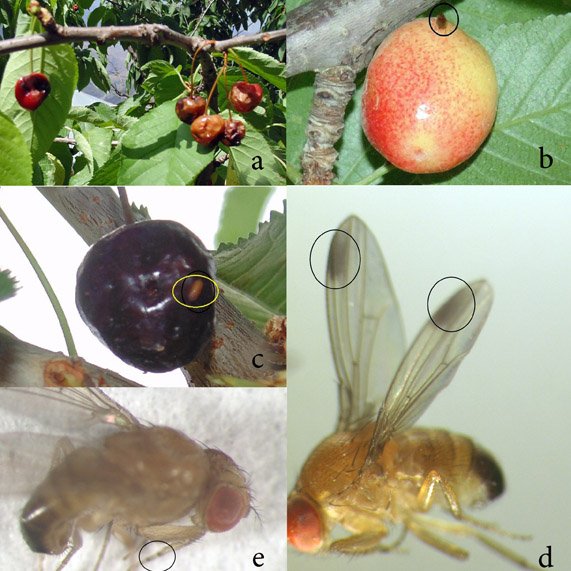
In Himachal Pradesh, situated in the North-West Himalayan region in India, maggot infestation was recorded in the ripening fruits of cherry, Prunus avium, the extent of which varied between 30 to 40 per cent. The flies were observed laying eggs inside the fruit by inserting their ovipositor. The flies were small (2-3mm), males have blackish spot at the apical end of the fore wing and also had two comb like patterns on the fore leg. The female bears a serrated ovipositor, which made it different ...
| | Biochemistry |
Research article
The effect of cold-stress on biochemical components of ...
Lakshmi Velide | Purushotham Rao. A.
Studies on cold acclimation of insects including silkworms have shown significant variations in the levels of various biomolecules to cope with thermal shock. The present study has been carried out on cold-stressed larvae of Daba Trivoltine (TV) of tasar silkworm, Antheraea mylitta Drury to analyze the mortality rate, variations in the biomolecules and excretory products at varied durations. The results revealed that exposure to low temperatures (10±1oC) for seven days leads to 100% ...
| | Review |
Review article
Host range, pest status and distribution of wood destroying termites of India.
Rashmi R. Shanbhag | R. Sundararaj
Termites are the major constituents of the forest ecosystem in the tropical and subtropical areas, are well known for their capacity to damage and destroy wood and wood products of all kinds. An adequate knowledge of pest status and the range of material which termite attack and geographical preference of the termite is essential for appropriate pest control. For this purpose, a review of literature was carried out to understand wood destroying termites of India, their host range, pest status and distribution.
| | Parasitology |
Research article
Entomological surveillance of rodents and ectoparasites...
Abhay Kumar Sharma | Kaushal Kumar | ...
Rodents carry a wide range of disease-causing organisms, including bacteria, viruses, protozoa and helminths. They also act as vectors or reservoirs for many diseases via their ectoparasites such as fleas, ticks, lice and mites. Present study was undertaken to ascertain the prevalence of rodents and their ectoparasite in the Mumbai port area (Mumbai). Rodents were trapped and ectoparasites were retrieved. Rodent serum, organ smears and tissue organ were investigated ...
| | Taxonomy |
Short communication
New records of Aemodogryllinae (Orthoptera: Rhaphidophoridae) from caves of Laos ...
Mauro Rampini | Claudio Di Russo | ...
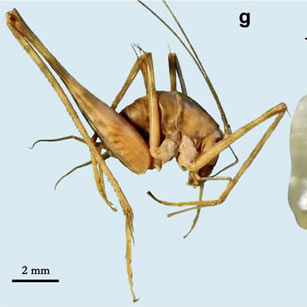
New samples of Aemodogryllinae collected in cave habitats from Laos are reported with the description of the unknown male of Eutachycines cassani (Chopard, 1954).The distribution of Aemodogryllinae in Laos includes, at present, E. cassani in the Central Laos, two species of the genus Paradiestrammena; P. vitalisi (Chopard, 1919) in the Northern part of the country, P. vernalis (Gorochov, 1998) in the Central Laos, and one representative of the genus Diestrammena (Brunner and Wattenwyl, 1888) from caves of Northern Laos close to the border with the Vietnam.
| | Diversity |
Checklist article
A comprehensive checklist of butterflies (Insecta: Lepidoptera) with their status and habitat preference ...
Ibrahim Khalil Al Haidar | Md. Farid Ahsan
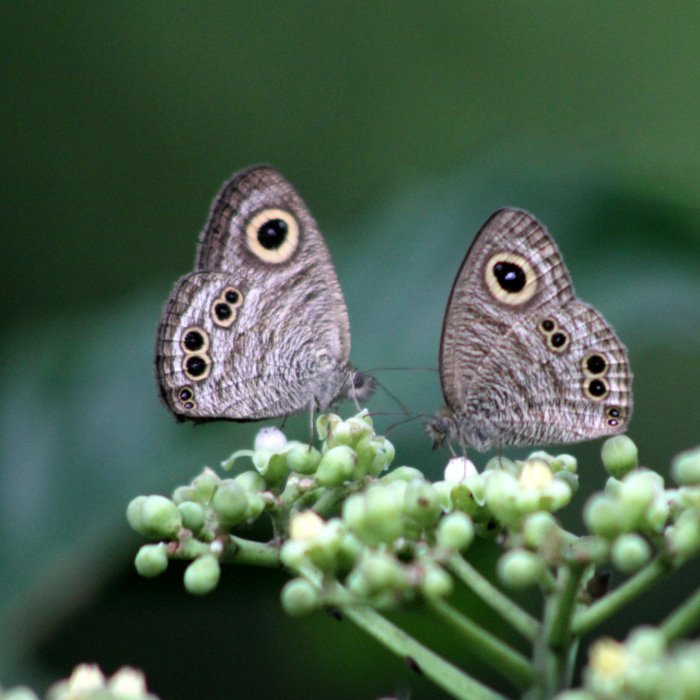
Teknaf Wildlife Sanctuary (TWS) is a peninsular area in the southeast corner of Bangladesh bordered by the Naf River from Myanmar in the east and bounded by the Bay of Bengal from the west and the south. A study on butterflies of TWS was conducted between March 2014 and June 2016 to make a comprehensive checklist, and to know their status and habitat preference. One hundred and thirty four species of butterflies belong of 86 genera and 6 families were enlisted, of which, 123 species were observed during this study and 11 species listed from previous report. Family Nymphalidae comprised the highest number of species ...
| | Methods |
Method article
A low cost aerial insect trap design for biologically diverse sampling of Arthropods...
Tze Min Teo | Anand Itchang | ...
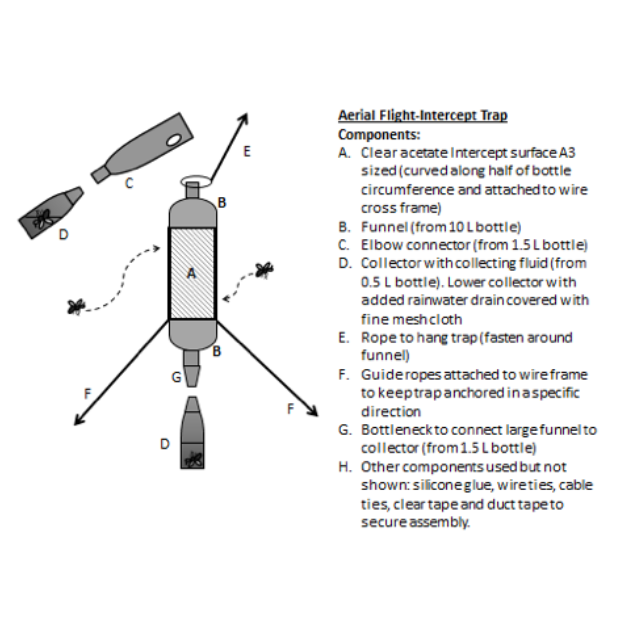
Sampling arthropods in oil palm tree canopies is a challenge when cost, practicality and availability of materials are taken into consideration. Details and design for a robust yet low cost aerial intercept trap made from easily available material are presented here. Highly available and salvageable materials such as reusable plastic drink bottles were used to keep the cost of an aerial insect trap low. The traps were used in the lower canopies of oil palms (Elaeis guineensis) as well as 1 meter above the ground of the palm base in a Malaysian oil palm plantation. The collected arthropod communities were ...